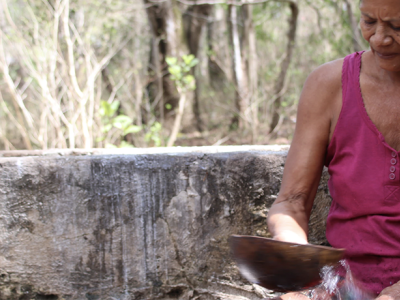Widely known for its rich biodiversity and efforts to conserve this biodiversity by placing more than 26 per cent of its land under protection, Costa Rica has developed a diverse economy that includes tourism, the export of agricultural products (principally bananas, pineapples and coffee), and light manufacturing (including the micro-processors and pharmaceuticals). Costa Ricans have the highest standard of living within Central America, with per capita income averaging about US$10,570 (USDS, 2011).
In 1994, Costa Rica initiated an ambitious program to incorporate sustainable development principles in the different programs of governmental institutions. In 1995, the Global Environmental Facility (GEF) provided funding to the government of Costa Rica through the United Nations Development Program (UNDP) to help the National Meteorological Institute elaborate a national inventory on greenhouse gas (GHG) emissions by sources (GEF/UNDP, GF/0103-92-01) according to the IPCC methodology; the reference year was 1990. Costa Rica determined that the energy sector and, in particular, the transportation sector require immediate attention regarding emissions.
Costa Rica has submitted two national communications to the United Nations Framework Convention on Climate Change (UNFCCC), laying out the actions that the government has already taken and the analytical basis for its policy response to climate change and its commitments to take future actions within an official international framework. The First National Communication established the First National GHG Inventory with 1990 as its base year and included an identification of adaptation and mitigation options to climate change for the water sector and coastal areas, as well as agriculture and forestry.
The Second National Communication was submitted in October 2009 and has a revised National Greenhouse Gas Inventories for 2000 and 2005, policies and mitigation measures for greenhouse gas absorption, vulnerability studies and adaptation measures to climate change, a chapter on technology transfer, as well as other pertinent information related to the achievement of the Convention.
Climate change vulnerability studies were also carried out with the financial support of The Netherlands Government through the Institute for Environmental Studies and the Coastal Zone Management Centre, as part of the project: Climate Changes Studies in Costa Rica. The three sectors evaluated in this project, considering potential climate scenarios, were: coastal areas, agriculture and forest ecosystems.
A rise in sea level caused by an increase in global average temperatures could lead to transgressions of the actual coastline and an increment in the amount of areas subject to tide inundations along the 1300 km coastline. Regarding the agricultural sector, studies showed that crop productivity can be affected with climate variability, temperatures can have an effect on crop development in all its phases, water deficit can diminish crop efficiency and biomass levels will be reduced. In terms of forest coverage, a significant reduction for tropical, humid premontane and highly humid montane life zone forests can take place, while an increase in coverage for humid and highly humid premontane may also occur.
The Costa Rican government marked the creation of the National Strategy for Climate Change (ENCC, Spanish acronym) as a top priority for its 2006-2010 agenda. Through this national policy, it is required from all public institutions, local governments and autonomous institutions to produce and put into execution a short, medium and long term action plans containing clear goals around the six main pillars of the strategy: mitigation, vulnerability and adaptation, precise metric system, development of national capacity and technology transfer, education and public awareness and financing. The mitigation pillar has as its main goal to make the country carbon neutral by 2021.







